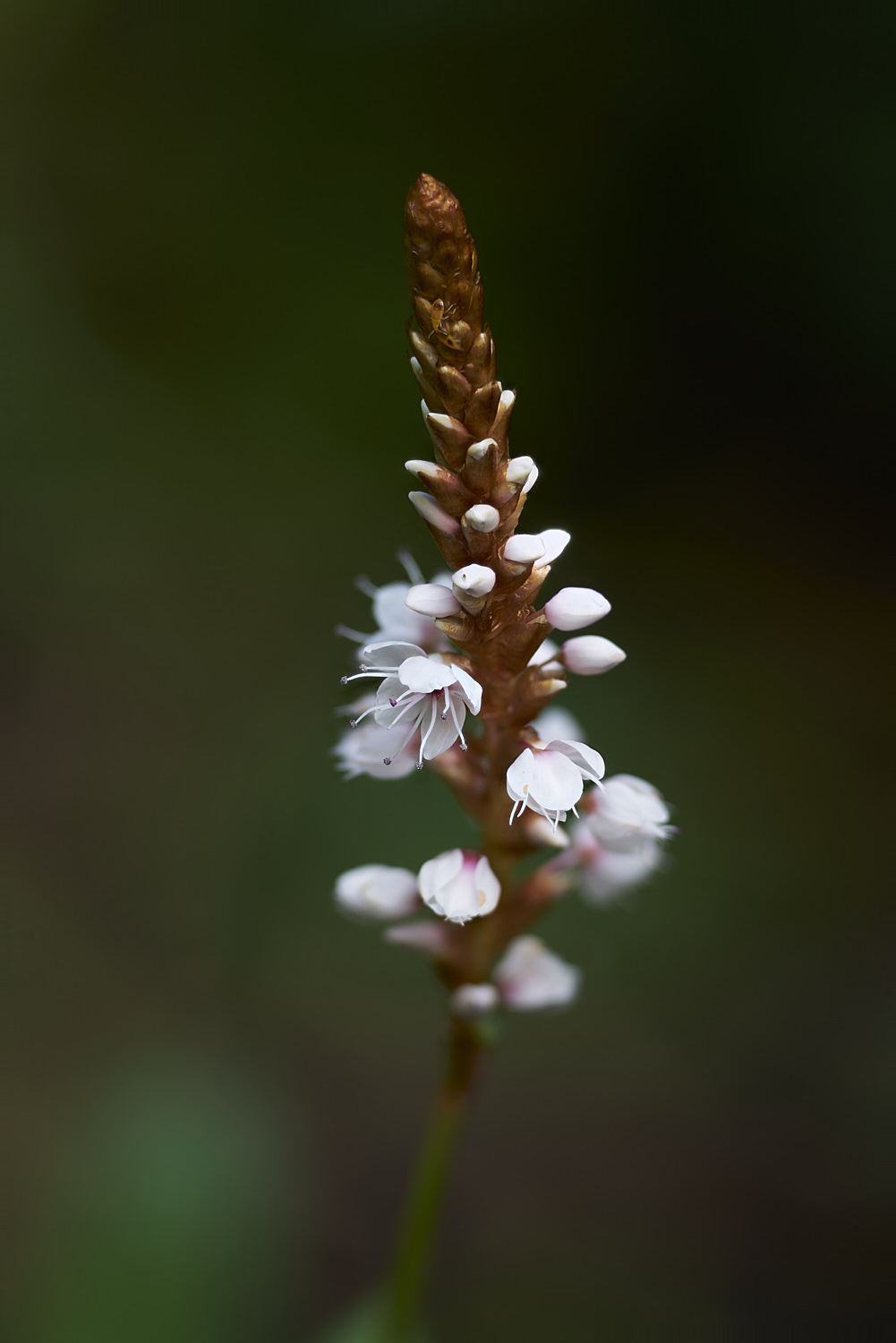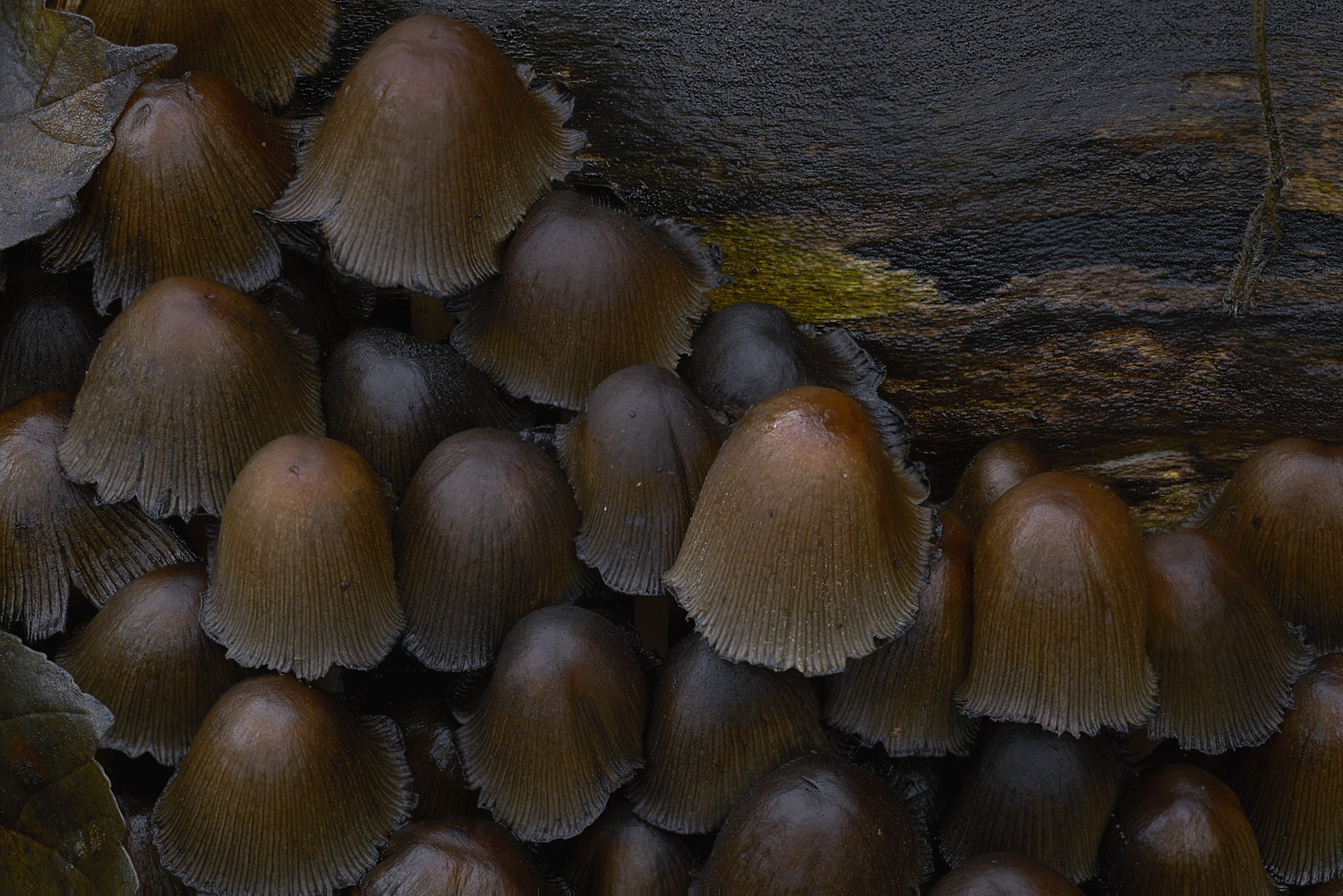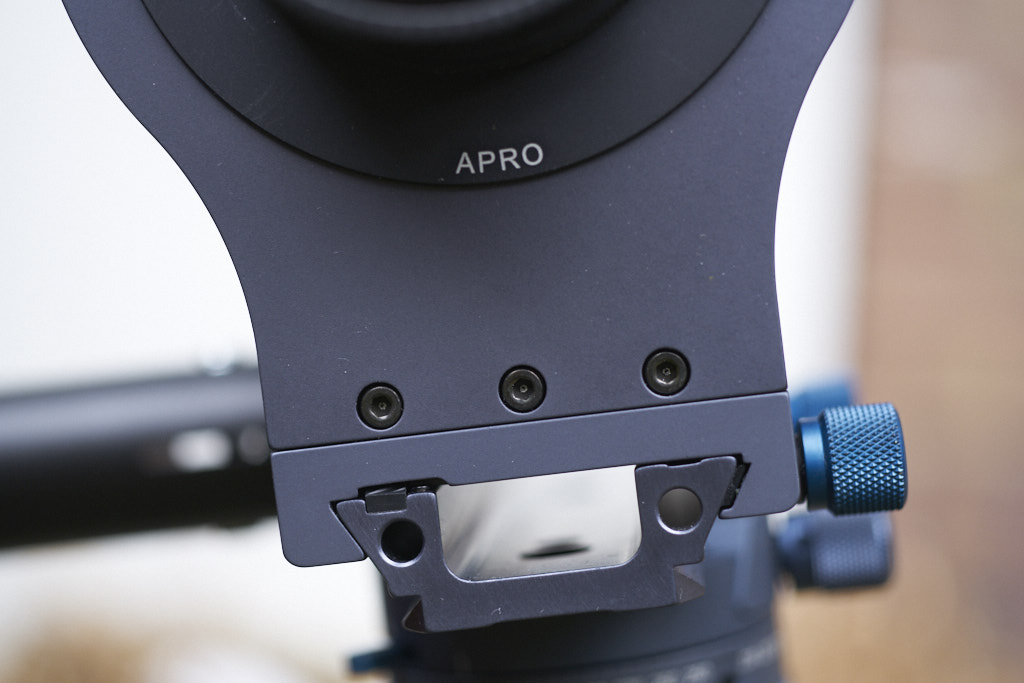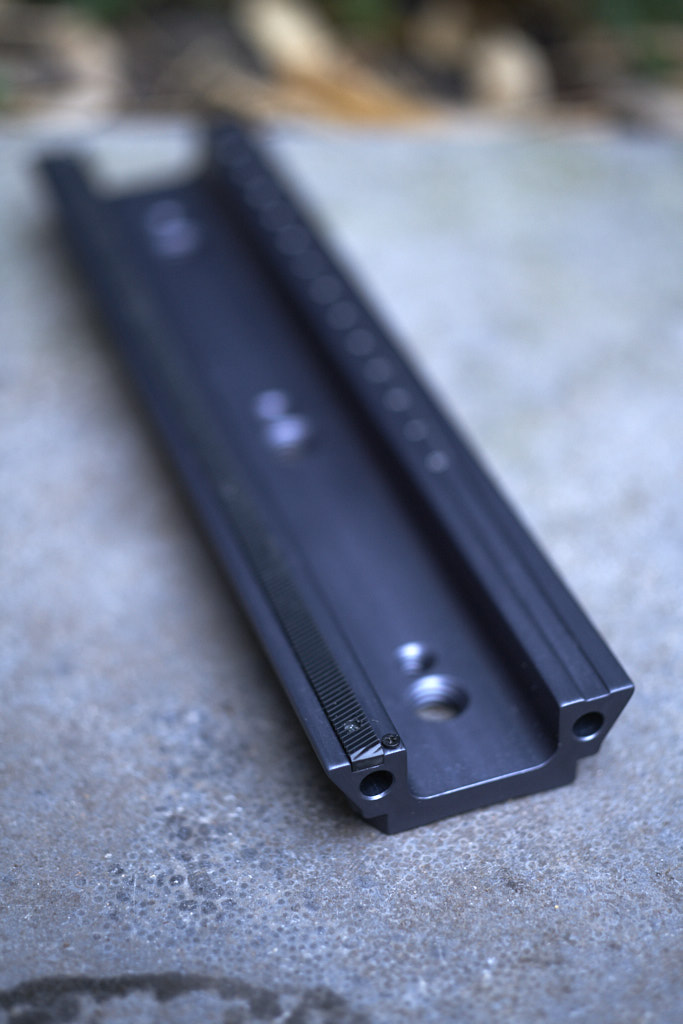So far I've used for stacking a 100mm macro on a macro rail and for some time now a Contax bellows with the matching Zeiss S-Planar 1:4 100mm. This bellows is very nice as it has 2 geared standards, but they are stiff and in general there is an annoying amount of play. At least partly age dependant no doubt.
So I gave in and purchased a Novoflex Balpro 1 bellows. Not cheap, but it is a wonderful bit of kit, but only the front standard is geared. The rear is friction only (although the setup can be used in reverse).
The plan is to mod the bellows so the rear standard is geared as well, using a setup similar to the RRS focusing rail. I.e.a threaded end along the length of the bellows and a turning nob at the rear (1 - 2 cm in diameter, which could easily be turned in increments).
The intention is to focus with the front standard and do the increments for focus stacking with the read standard using above mod.
Question is - what size of thread to use? I.e. how many mm's should the read standard move per rotation.
I am working mostly with a 100mm f4 (@f4 or f5.6 as indicated on barrel) at close up magnifications 1:4 or so. I do intend to venture into perhaps 2:1 at some point. I suspect the difference in step size between 1:4 and 2:1 is substantial - I try to find a balance between not having to turn XXX times at low magnifications and small increments of turns on a large knob at higher magnification.
I could make some estimations based on DOF overlap etc., but I am unsure how it will 'feel' in reality. Has anyone tried something similar and can advise?
Some images to give an idea of the application. The moth in green is circa 1:1.

stack 4 by Hans van den Bosch, on Flickr
 stack 2 by Hans van den Bosch, on Flickr
stack 2 by Hans van den Bosch, on Flickr stack by Hans van den Bosch, on Flickr
stack by Hans van den Bosch, on Flickr stack 1 by Hans van den Bosch, on Flickr
stack 1 by Hans van den Bosch, on Flickr





